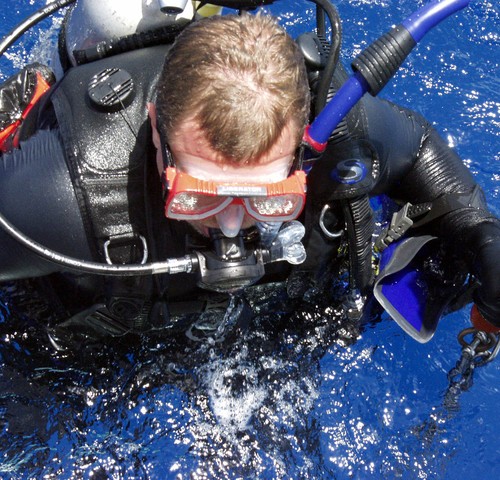
Posted on January-01-2020
Underwater welding sounds like a cool and interesting job role. One that involves a great deal of skill and expertise. In a previous blog we explored what is meant by the term ‘underwater welding’ and how you can become an underwater welder. Today, we’d like to focus upon the two different types of underwater welding. There are two main types of underwater welding: wet welding and dry welding. With this mind, we want to explore the questions: how does underwater welding work? How do welder-divers perform welding tasking at elevated pressures, and in particular underwater?
Wet welding is a process that produces an electric arc between an electrode and the infrastructure being welded together. It is a cost-effective and versatile method that is called ‘Shield Metal Arc Welding (SMAW)’. Before carrying out this weld, the underwater welders check the surroundings for any obstructions or safety hazards. It is also crucial that they keep electrodes clean. To prevent underwater welders from being electrocuted a thick layer of gaseous bubbles are created externally around the electrode, covering the weld and shielding the electricity from water, corrosive gasses and other oxidising compounds. Other common types of underwater wet welding include: Flux-cored Arc Welding (FCAW) and Friction Welding.
Dry welding, otherwise known as ‘habitat welding’, is a process that involves using a hyperbaric chamber. It begins with creating a seal around the structure that requires welding. Then connected hoses flush water out and replace it with a mixture of different gases (like helium and oxygen). When all the water has been pushed out, the hyperbaric chamber will be pressurised to the correct depth; this is to avoid decompression sickness.
The techniques used in dry welding will depend on the size of the hyperbaric chamber. There are 4 types of dry welding methods that underwater welders can use: pressure welding, habitat welding, dry chamber welding, and dry spot welding. Alongside these, you can also use the wet welding techniques of Shielded Metal Arc Welding and Flux-Cored Arc Welding.
As underwater welders have various elements to contend with (such as atmospheric gas, water and gas pressures, specialised diving and welding equipment, limited space and water and electric current supply), expert welder-divers must be fully prepared to avoid risks and handle the dangers. The dangers of underwater welding include:
As there is an element of danger involved in this job, necessary safety precautions must be taken to reduce the risk. Some of these safety precautions include: being tethered to the surface, having another welder-diver to assist the process, and constant communication with the team while the welding operation is being carried out.
If you’re interested in hiring welding equipment, Arc Welding Services Ltd have a wide range of welding tools and supplies. For more information you can call our expert team on 0121 327 2249 or fill out our online contact form.